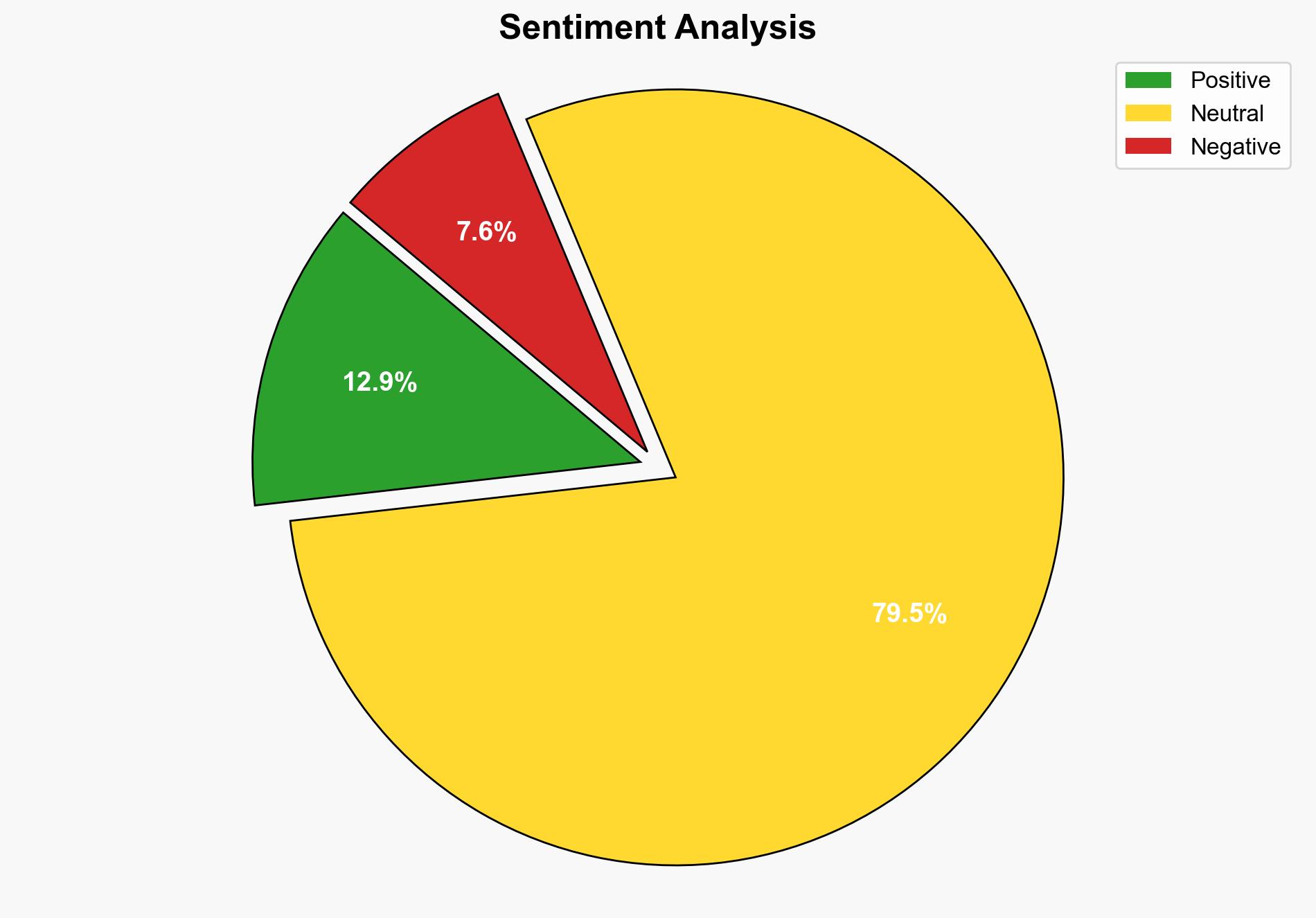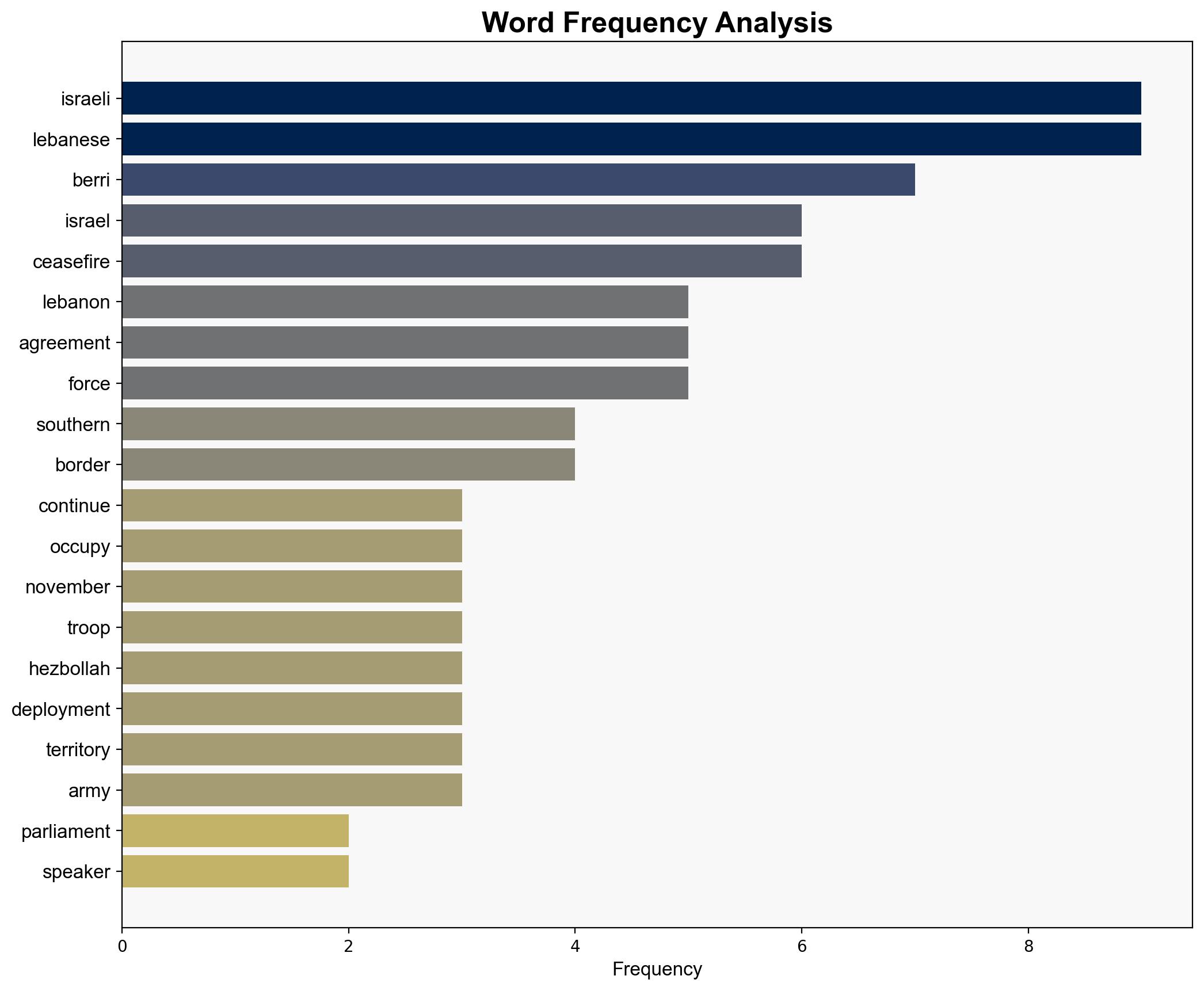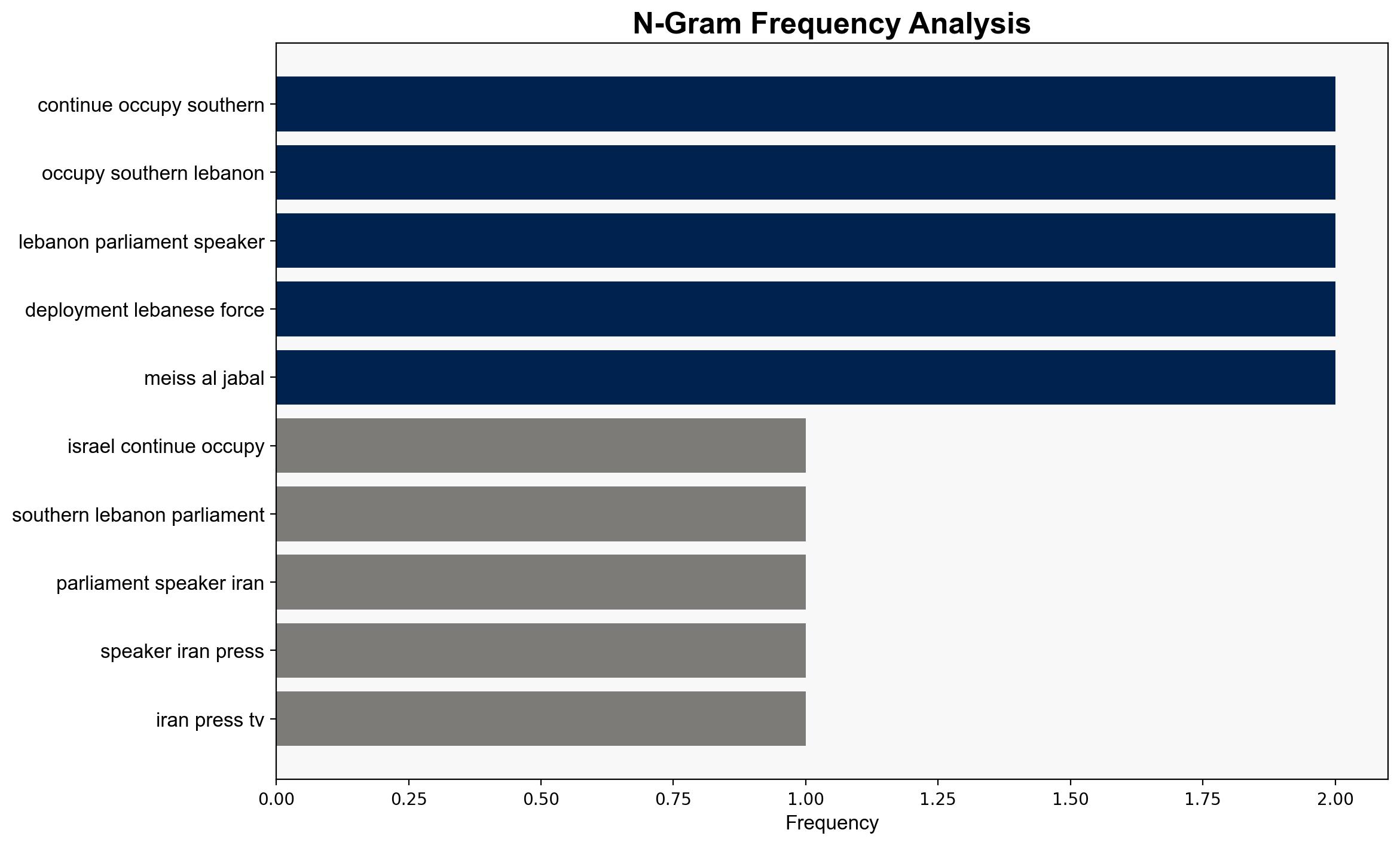Israel continues to occupy parts of southern Lebanon Parliament speaker – Globalsecurity.org
Published on: 2025-11-05
Intelligence Report: Israel continues to occupy parts of southern Lebanon Parliament speaker – Globalsecurity.org
1. BLUF (Bottom Line Up Front)
The most supported hypothesis is that Israel maintains a strategic military presence in southern Lebanon to counter Hezbollah’s influence and ensure security along its northern border. This assessment is made with moderate confidence, given the complexity of regional dynamics and historical context. It is recommended that international diplomatic efforts be intensified to address ceasefire violations and promote dialogue between involved parties.
2. Competing Hypotheses
1. **Hypothesis A**: Israel’s continued military presence in southern Lebanon is primarily a defensive measure aimed at deterring Hezbollah and securing its northern border. This hypothesis suggests that Israel’s actions are motivated by security concerns and the need to prevent arms smuggling and militant incursions.
2. **Hypothesis B**: Israel’s presence is part of a broader strategy to exert political pressure on Lebanon and influence regional geopolitics. This hypothesis posits that Israel’s actions are not solely defensive but also intended to maintain leverage over Lebanon and its allies, particularly Iran and Syria.
Using ACH 2.0, Hypothesis A is better supported by the historical context of Israel’s security concerns and ongoing tensions with Hezbollah. Hypothesis B lacks direct evidence but remains plausible given the complex geopolitical landscape.
3. Key Assumptions and Red Flags
– **Assumptions**:
– Israel’s actions are primarily driven by security concerns.
– Hezbollah poses a significant threat to Israeli security.
– **Red Flags**:
– Lack of independent verification of troop movements and territorial control.
– Potential bias in statements from involved parties, such as the Lebanese Parliament speaker and Israeli officials.
– **Blind Spots**:
– Limited insight into internal Israeli strategic deliberations.
– Insufficient data on Hezbollah’s current military capabilities and intentions.
4. Implications and Strategic Risks
The ongoing military presence and tensions could lead to several scenarios:
– **Escalation**: Increased military engagements could lead to broader conflict, affecting regional stability and international relations.
– **Stalemate**: Continued low-level skirmishes without significant escalation, maintaining the status quo but perpetuating instability.
– **Diplomatic Resolution**: Successful international mediation could lead to a reduction in hostilities and a more stable ceasefire agreement.
Strategic risks include potential economic impacts on Lebanon, increased refugee flows, and heightened regional tensions involving Iran and Syria.
5. Recommendations and Outlook
- Encourage diplomatic engagement through international bodies to address ceasefire violations and promote dialogue.
- Monitor developments closely for signs of escalation or de-escalation.
- Scenario Projections:
- Best Case: Diplomatic resolution leads to a stable ceasefire and reduced tensions.
- Worst Case: Full-scale conflict involving regional actors, leading to significant humanitarian and economic consequences.
- Most Likely: Continued low-level tensions with periodic escalations.
6. Key Individuals and Entities
– Nabih Berri
– Joseph Aoun
– Morgan Ortagus
– Hezbollah
– Israeli Defense Forces
7. Thematic Tags
national security threats, regional focus, geopolitical strategy, military presence





